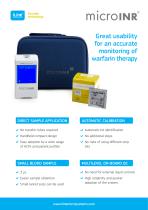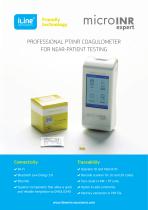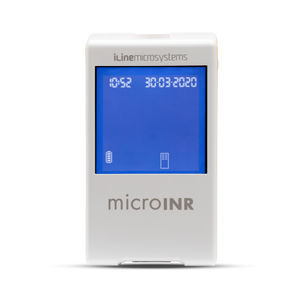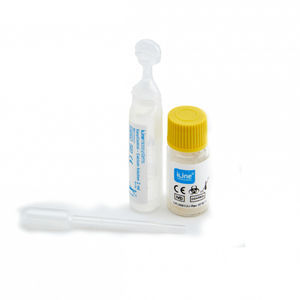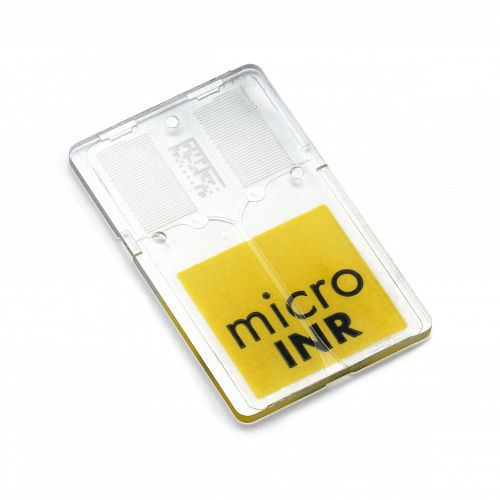
- Laboratory
- Laboratory medicine
- Coagulation test strip
- iLine Microsystems S.L.
- Products
- Catalogs
- News & Trends
- Exhibitions
Coagulation test strip microINRINRbloodcapillary blood
Add to favorites
Compare this product
Characteristics
- Application field
- coagulation
- Tested parameter
- INR
- Sample type
- blood, capillary blood, surface
- Sample volume
0.003 ml
(0.0001 US fl oz)
Description
The microINR Chip is a disposable plastic test strip, that encloses two microcapillary channels, of extremely simple construction and fully passive (i.e. no built-in sensors, nor electrodes, nor external pumping).
INR determination is performed through capillary blood flow monitoring along microfluidic channels.
Chip Specifications:
- High sensitivity human recombinant thromboplastin
- Real control assay in parallel channel
- Chip expiry and calibration parameters coded and integrated into the Chip
- Individually packed
- Storage at room temperature (2-25ºC / 36-77ºF)
- 15 Months shelf life
Catalogs
Exhibitions
Meet this supplier at the following exhibition(s):

*Prices are pre-tax. They exclude delivery charges and customs duties and do not include additional charges for installation or activation options. Prices are indicative only and may vary by country, with changes to the cost of raw materials and exchange rates.


